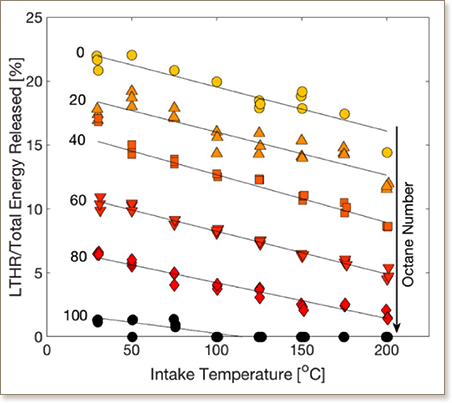HCCI octane number scale in a pressure-temperature diagram
J.B. Masurier, A. Elkhazraji, A. Mohammed, B. Johansson
SAE Technical Paper, 2019-01-0965, (2019)

A new approach for investigating combustion behavior of practical fuels under homogeneous charge compression ignition (HCCI) conditions was developed with the help of a cooperative fuel research (CFR) engine. The method uses a set of two pressure-temperature diagrams and two charts, each with an octane number scale based on primary reference fuels (PRF), created from experimental results by sweeping the intake temperature. The two pressure-temperature diagrams report conditions leading to the start of the low temperature combustion and the start of the main combustion, respectively. Additional two charts -- required compression ratio and fraction of low temperature heat release charts -- describe global combustion behavior and the importance of the low temperature combustion. Each diagram and chart, together with their respective octane number scale, allow to examine the combustion behavior of practical fuels by comparing their combustion behavior with those of the PRFs. Finally, octane numbers representing the various combustion behaviors of a practical fuel can be rated. Application of the method with two low-octane number surrogate fuels led to the following main results. The required compression ratio chart provides a quick description of the combustion behavior. The pressure-temperature diagrams indicate the ease with which a fuel ignites under low temperature combustion and main combustion regimes. An extra pressure-temperature diagram reports start and end of the negative temperature coefficient regime and highlights that this regime is independent of the fuel. Accordingly, each combustion regime is clearly defined in the pressure-temperature diagram. The fraction of low temperature heat release finally indicates how low temperature combustion vanishes. Finally, octane numbers for each practical fuel were rated from each diagram and chart. Rated octane numbers suggest that a single PRF cannot reflect the entire combustion behavior of a practical fuel; but multiple PRFs are required for HCCI combustion.